Kai Tak Airport History
Primary tabs
I was surprised at how far the old RAF Kai Tak hangar was from what I thought of as the airport area. So here is a sequence of maps and aerial photographs over the last 100 years or so, showing how the area has changed.
(The red arrow on each photo points to the hangar's location.)
1902 [1]
The area is mostly empty at this time, with just a few villages (the black areas are buildings), and not much in the way of roads. The main built-up area is Kowloon City. At the top left corner of that you should be able to see a triangle shape, pointing up to the top of a hill. That was the old wall that was part of the Chinese fortification in the area.
The Wright brothers wouldn't take to the air until the following year, so noone was thinking of airfields at this time. There had already been successful passenger flights though, with a passenger balloon taking off from Happy Valley in 1890. [2]
1924 [1]
In this 1924 map we can see several roads have been built, and the area that will become the airfield has already been reclaimed in the top right corner of the map. Oddly, it is marked out in a grid of streets, not runways. That's because the reclamation was carried out by the Kai Tak Investment Company, formed in 1922 by Mr. Ho Kai & Mr. Au Tak[3]. The goal was to build and sell housing on the new land, but they ran out money before the work could be finished.
1930 [4]
No big change in the shape of the land, but by 1930 the area Kai Tak is firmly in use as an airfield. There is a grass strip for light aircraft, and slipways for the larger seaplanes that would land and take off in Kowloon Bay. [2]
1944 [1]
This aerial photograph was taken by the US air force on one of the flights over Japanese-occupied Hong Kong. You can see the airfield is now much larger than it was in 1930. The expansion was conducted by the Japanese, with many of the Allied POW's used as labourers. When the work was complete, there were two concrete runways, one crossing the other.
I'd always believed that the expansion had been seawards, reclaiming land. There was some reclamation, especially in the southwest corner. But most of the new land appears to be in the northwest, extending the airfield further inland.
The black line curving around the western edge of the runway is the nullah, with a new road running along it's edge. Choi Hung Road still follows the same route today.
Just below the tip of the arrow is the hangar that we mentioned earlier, visible for the first time. Before the Japanese expansion, that area was nowhere near to the airfield. It suggests that the hangar was built during the expansion, and so was built by the Japanese.
1948
Moddsey sent in this copy of a landing chart from the 1940s, showing the two runways mentioned earlier. He writes:
Not a very clear map but one can see the access road to the hangar.
Note the crossing runways with the longer main runway in a southeasterly/northwesterly direction and the secondary runway in a west-south-westerly/east-southeasterly direction.
The main runway in a SE/NW direction was designated as Runway 13/31 and the secondary as Runway 07/25.
If one is landing or taking off in a south-easterly direction, one would be landing or taking off on Runway 13 and conversely the other way round would be Runway 31. The designation of 13 refers to the physical alignment of the runway in relation to north which approximately equates to a bearing of 130 degrees.
Due to terrain, Runway 13 was used for landings and take-offs whilst Runway 31 was only used for landings; Runway 07 was only used for arriving aircraft whilst Runway 25 was only used by departing aircraft.
There is no information at hand to indicate when did the RAF hangar at Tai Hom become disused. My guess would have probably been in the late 1940s when Government needed space to accommodate the growing influx of refugees from the Mainland.
There were two road crossing points with barrriers and bells to halt road traffic. From recollection, one was located on Clearwater Bay Rd (today's Choi Hung Rd) near the present day Kai Tak Nullah in San Po Kong and the other on Ma Tau Wai Rd near the present day Kowloon City roundabout.
Having said all that, one has to remember that post-war Kai Tak also functioned as a seadrome with Sunderlands, Catalinas etc landing and taking off from Kowloon Bay. It was indeed an interesting era!
1954 [1]
No big changes to the layout. The hangar is still just across the road from the northern boundary of the airport, but was it still in use?
if you look closely you'll see two small white crosses on the sea below the end of the runway. Those are two seaplanes.
1957 [4]
I guess the hangar was no longer considered part of the airfield at this point, as the road from the airfield to the northeast boundary no longer lines up with the road that passes the hangar.
The Japanese runway layout is still in use, but not for much longer, as the big reclamation is underway to build the new runway. It was major news at the time, and made the first page of the 1955 Hong Kong Annual Report:
The year also saw the start of work on a $110,000,000 project to revolutionize Kai Tak Airport by the construction of a 7,200-ft runway on an artificial promontary reclaimed from the sea and projecting out into the waters of Kowloon Bay. In danger of being knocked off the international airline map by reason of its airport being too small and dengerous for the Comet and the larger conventional airliners, Hong Kong has now taken steps to keep itself firmly on the map. The airport project, when completed in 1958, will provide, for the first time since aviation started in the Colony, facilities for day and night operation all the year round.
1990 [1]
This is the area as it was when I arrived in 1989. The northwest boundary of the airport, Prince Edward Rd East, is not so far away from the northwest boundary of the original airfield in the 1920s. The area above that, San Po Kong, was an industrial area, except for a small area to the east which housed the Blackdown Barracks.
Most of the area between the original coastline and the runway has been reclaimed, leaving the foul-smelling nullah between the two.
2008
Here's how it looks today. Although Kai Tak Airport has been closed for almost ten years, the area is still awaiting redevelopment. The latest plans propose a mix of residential and hotel accomodation, a large stadium, and two new cruise-ship terminals.
As always, please leave a comment if you have any information or memories to add, or any corrections to make.
Regards, David
References:
[1] Maps and aerial photos from the 'Mapping Hong Kong' book
[2] Kai Tak Air Traffic Control
[3] Kai Tak Airport 1925-1998
[4] Maps from Map Library in Central Library
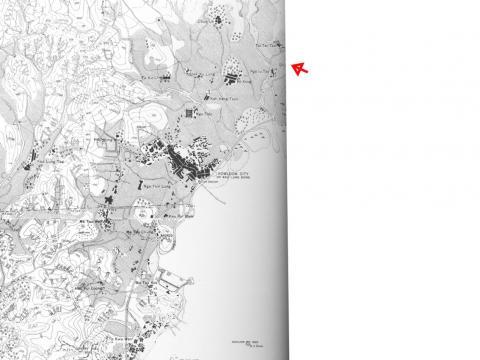
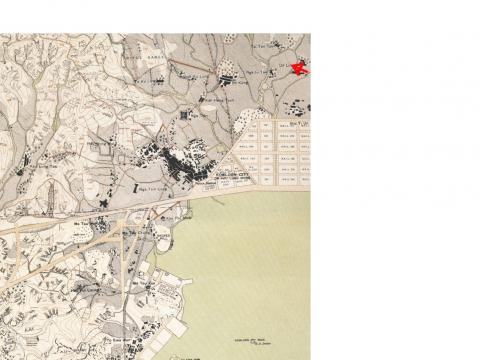
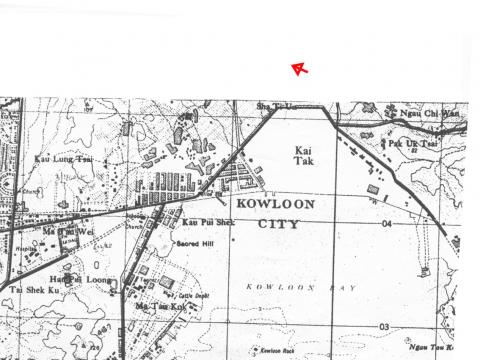
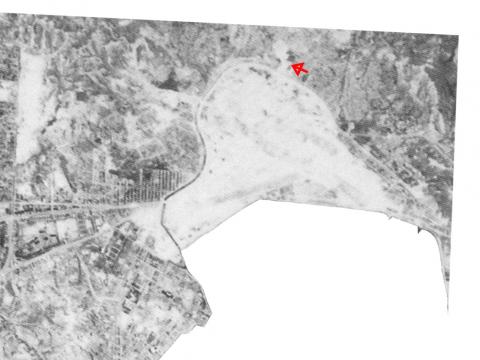
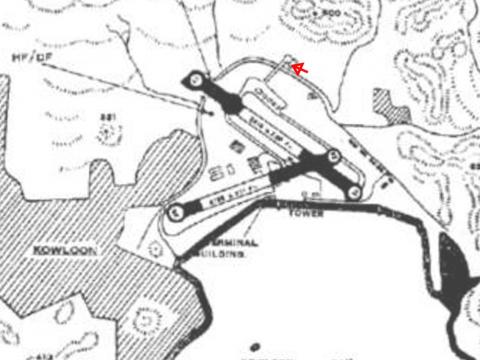
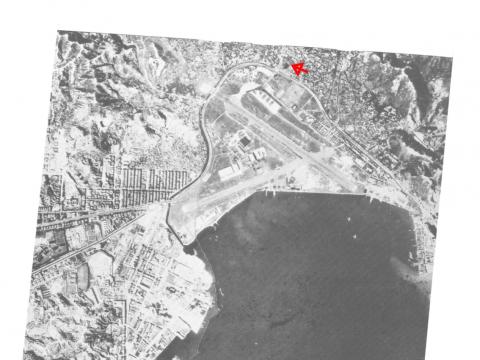
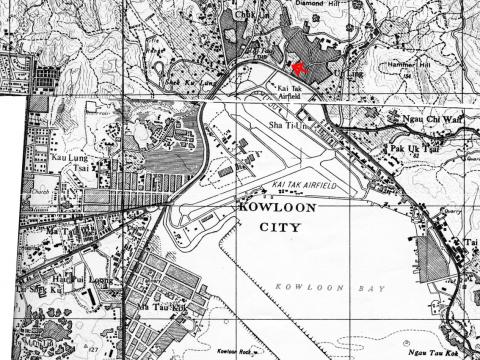
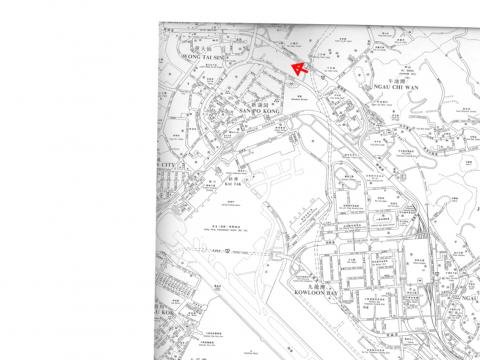
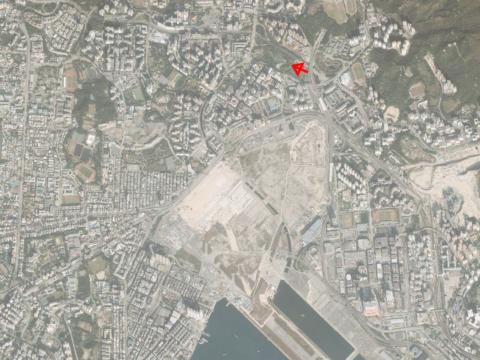


Comments
1962 Hawker Hunter crash in memory of Fl/Lt D.G.Crichton
Rob, I was born in HK and living in Toronto Canada now, I grew up watching aero planes from our house at Diamond Hill near the old Tai Hom village hanger over looking the Kai Tak airport.I went to Perth Street Government Elementary School next to the RAFquarters and then to Ying Wa Boys school on Oxford road all along the path for landing at Kai Tak.I didn't do well at school as I was watching planes goes by the whole day.
Sorry for the late reply, as I recently retired last month from my job as a medical microbioogy technologist. I got time to roam the sites and stumbled on your 2011 message.As I mentioned from my 2008 post,as to my best recollection on December 28, 1962, I went up to our roof with my binoculars as my daily routine. I think there were three may be four hunters,as usual for a routine landing, they were coming in from the west in a formation through the harbor towards Lee Yiu Mum then breaking off right one by one south to come around the island and circle over the hills for landing.Nothing was unusual until the last plane piloted by Fl/Lt D.G.Crichton did not reappeared over the hills where he was suppose to appear. I was a little puzzled then I saw the puff of black smoke going up in the sky. I did not hear any sound as it was far away I ran downstairs almost jumping off the ladder to tell my elders playing Mahjong that there is a plane crash , they didn't quite believe me.I went back up and notice the blades of the RHKAAF helicopter starting to turn and later took off to the crash site that it finally sank in that I had witnessed a crash. It was announced later in the afternoon on the radio and on newspaper the next day for the sad news. It appeared the plane did not climb up enough and clear the hill top for unknown reasons .After so long ago, from internet, I am so surprice to find out more and more detail of stories from other people connecting together.
Sincerely
Steven Lai
Kai Tak Airport History
Thanks David for the wealth of historical photos and discussion. The 1944 and 1954 air photos show the barren airport land next to the tip of Prince Edward Road, and the old police station was no longer there. Thus, what I thought I saw it there was a different building with similar appearance at a different site whose coordinates forgotten. Thanks Moddsey for correcting me.
Pages